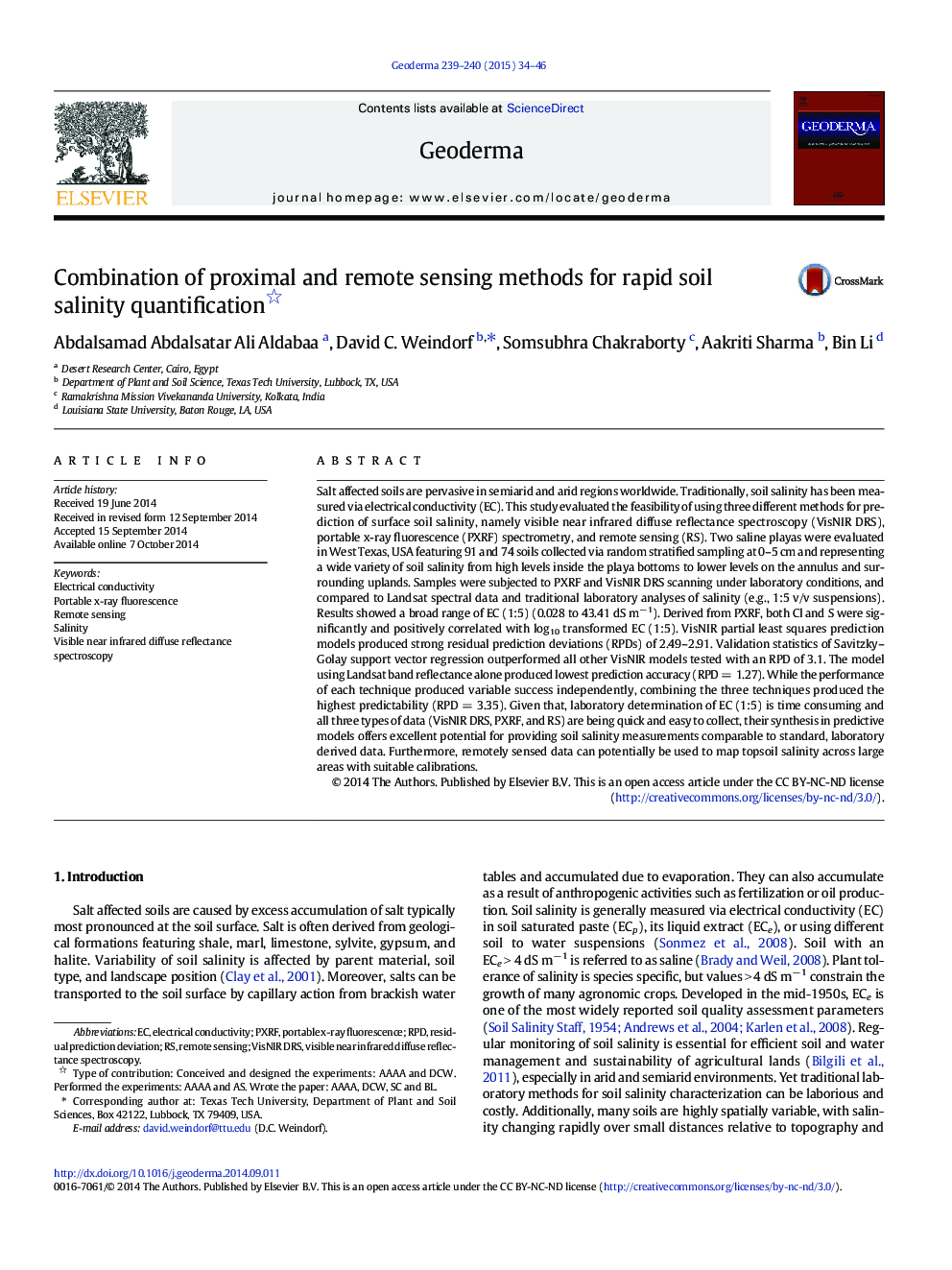| کد مقاله | کد نشریه | سال انتشار | مقاله انگلیسی | نسخه تمام متن |
|---|---|---|---|---|
| 6408635 | 1629466 | 2015 | 13 صفحه PDF | دانلود رایگان |

- 165 soil samples were collected from 2 saline playas.
- We predicted soil EC with VisNIR DRS, PXRF, and RS.
- VisNIR DRS performed better than PXRF and RS.
- Combining all three approaches produced the highest predictability.
Salt affected soils are pervasive in semiarid and arid regions worldwide. Traditionally, soil salinity has been measured via electrical conductivity (EC). This study evaluated the feasibility of using three different methods for prediction of surface soil salinity, namely visible near infrared diffuse reflectance spectroscopy (VisNIR DRS), portable x-ray fluorescence (PXRF) spectrometry, and remote sensing (RS). Two saline playas were evaluated in West Texas, USA featuring 91 and 74 soils collected via random stratified sampling at 0-5 cm and representing a wide variety of soil salinity from high levels inside the playa bottoms to lower levels on the annulus and surrounding uplands. Samples were subjected to PXRF and VisNIR DRS scanning under laboratory conditions, and compared to Landsat spectral data and traditional laboratory analyses of salinity (e.g., 1:5 v/v suspensions). Results showed a broad range of EC (1:5) (0.028 to 43.41 dS mâ 1). Derived from PXRF, both Cl and S were significantly and positively correlated with log10 transformed EC (1:5). VisNIR partial least squares prediction models produced strong residual prediction deviations (RPDs) of 2.49-2.91. Validation statistics of Savitzky-Golay support vector regression outperformed all other VisNIR models tested with an RPD of 3.1. The model using Landsat band reflectance alone produced lowest prediction accuracy (RPD = 1.27). While the performance of each technique produced variable success independently, combining the three techniques produced the highest predictability (RPD = 3.35). Given that, laboratory determination of EC (1:5) is time consuming and all three types of data (VisNIR DRS, PXRF, and RS) are being quick and easy to collect, their synthesis in predictive models offers excellent potential for providing soil salinity measurements comparable to standard, laboratory derived data. Furthermore, remotely sensed data can potentially be used to map topsoil salinity across large areas with suitable calibrations.
Journal: Geoderma - Volumes 239â240, February 2015, Pages 34-46